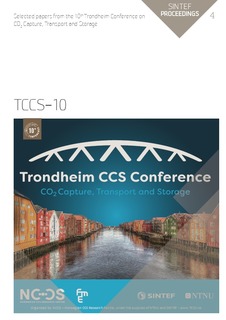Experimental Study of the use of Particles for Tracking the Interfaces in Primary Cementing of Concentric and Eccentric Wells
Chapter, Conference object, Peer reviewed
Published version
Permanent lenke
http://hdl.handle.net/11250/2637970Utgivelsesdato
2019Metadata
Vis full innførselSamlinger
- SINTEF Industri [1566]
- SINTEF Proceedings [402]
Sammendrag
In this study, our recent and new approach for detailed tracking of the interface between well fluid and cement by using particles is investigated. The particles can enable us to know the precise location of the interface between two fluids and be sure about displacement efficiency in the annulus. This includes the introduction of intermediate buoyant particles that reside at the interfaces between successive fluids in a well (e.g., cement-spacer or spacer-mud). Such particles must overcome strong secondary flows to travel with the interface. For this purpose, the displacement mechanisms of Newtonian and non-Newtonian fluids in the annulus of vertical and inclined wells is investigated by using an experimental set-up with concentric and eccentric annular geometries. For more efficient displacement, the displacing fluid should have a higher density than the displaced fluid, and the intermediate-buoyancy particles that reside at the interface between successive fluids are introduced into the models. Particle motions are investigated in models with different fluid rheology and displacement flow rates. This approach for tracking of the interface can improve the quality of annular cementing of CO2 wells and thus the storage safety.

